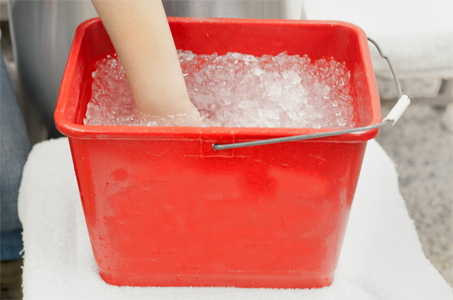There was a time when new ideas led to new products like this;

Unfortunately, the competitive race to become ‘first to market’ now often leads to this;

The classic example is anti-oxidants. When I was in the early years of medical training, a few of our lecturers were quite excited about new research into the role of intracellular free radicals on cell’s aging and mutation. Anti-oxidant molecules can protect from free radicals. This was a time when no one who wasn’t a scientist had heard of anti-oxidants. Within a year or two there were thousands of products and supplements on the market promoting their healthy anti-oxidant properties. It was too late for the scientists, who were continuing with their research to catch the commercial juggernaut that had bolted to tell them that the research went on to show that antioxidant therapy has no effect in protecting cells and can even increase mortality (citations at bottom of page). Ask the average punter in the street whether anti-oxidant supplements are good for them and you’ll soon realise that commercial marketing is far more influential than my university lecturers.
Let's look at a few more....
Magnesium Helps Reduce Muscle Cramps
Magnesium plays a role in neuromuscular transmission and muscle contraction. So it was hypothesized that magnesium deficiency may predispose to muscle cramps. This was a classic case of product following idea but preceding proof as the subsequent research has NEVER produced any evidence that magnesium supplements provide any clinical benefit other than for pregnancy-related cramps. There are literally dozens of medical conditions and medication side effects that can lead to cramps. When they are identified they are usually easy to treat. Sometimes the cause is very hard to identify. (BTW Quinine (another oft used cramp treatment) has had its TGA approval withdrawn as it increases the risk of thrombocytopenia and has been associated with 4 deaths in Australia)
Ice Baths Help with Muscle Recovery

At least this one has some anecdotal support. The anecdotes coming from elite athletes across a wide range of sports who have adopted it into their post-match routines. There is however no convincing evidence that it helps and some evidence that shows the reduced blood flow from ice baths can inhibit muscle protein synthesis and repair and therefore reduce the adaptive benefits of exercise and slow muscular repair. People that still advocate this (and there are plenty) cite the placebo effect and there is no doubt that there are psychological effects. It may be that the athletes who swear by ice baths are hooked on the invigorating effect and endorphin rush but there are much better proven methods of muscle recovery. In randomised control trials nothing has ever beaten an aerobic, weight-supported, active recovery with gentle massage in resolving delayed onset muscle pain.
Stretching before exercise helps to prevent injury.
There are two types of stretching routines. Stretching before exercise or stretching as a separate routine done multiple times a week. Stretching before exercise can very transiently increase the length of the muscle being stretched - this literally lasts just a few minutes. But, it can actually reduce running economy and performance for up to an hour by diminishing the musculotendinous stiffness and elastic recoil. Additionally there is no evidence to support that pre-exercise stretching reduces injury risk (studies have mostly shown no difference but a few have shown increase risks of soft tissue strains) or any reduction in post-exercise soreness. A low impact active warm-up is far more effective.
Mobility, on the other hand, can be very important. But it is important to consider what is contributing to limitations in mobility. If you have joint damage or spurs limiting your range of movement then stretching can severely worsen the situation. If there is soft tissue limitation to mobility then regular stretching after exercise or any other time where the muscles are pre-warmed can be beneficial at keeping you adequately mobile. Remember though that there are different levels of mobility required for different pursuits.





















